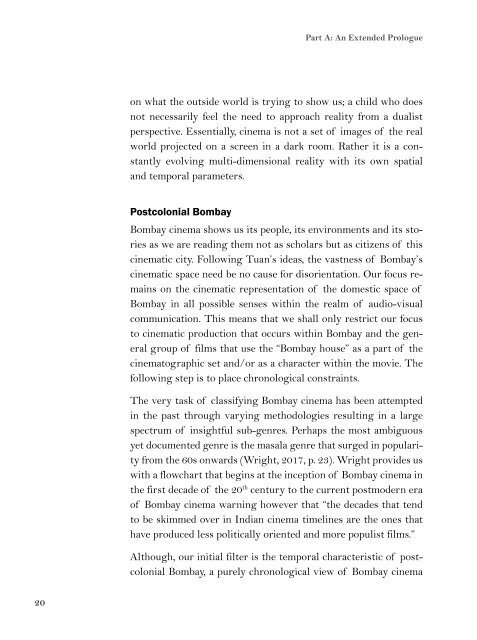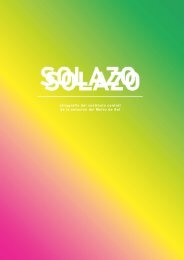Dwelling In (On) Bombay Cinema
Dwelling In (On) Bombay Cinema is an experimental research into the domestic condition of Bombay through a reading of Bombay cinema. It composes of an audio-visual product and the following textual documentation of the investigation methodology. These two entities are intended to be archived together digitally and physically. This work is part of the final assignment (trabajo fin de máster) of the masters programme in architectural communication or MAca (Máster Universitario en Comunicación Arquitectónica ) in the Superior Technical School of Architecture of Madrid (Escuela Técnica Superior de Arquitectura de Madrid) under the Technical University of Madrid (Universidad Politécnica de Madrid). The following document is to accompanied by the digital essay-film available through the following link: https://youtu.be/OO8dxD5Ypos The investigation is authored by Akshid Rajendran. And tutored by Atxu Amann y Alcocer and Samuel Fuentes. January 2019.
Dwelling In (On) Bombay Cinema is an experimental research into the domestic condition of Bombay through a reading of Bombay cinema. It composes of an audio-visual product and the following textual documentation of the investigation methodology. These two entities are intended to be archived together digitally and physically. This work is part of the final assignment (trabajo fin de máster) of the masters programme in architectural communication or MAca (Máster Universitario en Comunicación Arquitectónica ) in the Superior Technical School of Architecture of Madrid (Escuela Técnica Superior de
Arquitectura de Madrid) under the Technical University of Madrid (Universidad Politécnica de Madrid).
The following document is to accompanied by the digital essay-film
available through the following link: https://youtu.be/OO8dxD5Ypos
The investigation is authored by Akshid Rajendran.
And tutored by Atxu Amann y Alcocer and Samuel Fuentes.
January 2019.
You also want an ePaper? Increase the reach of your titles
YUMPU automatically turns print PDFs into web optimized ePapers that Google loves.
Part A: An Extended Prologue<br />
on what the outside world is trying to show us; a child who does<br />
not necessarily feel the need to approach reality from a dualist<br />
perspective. Essentially, cinema is not a set of images of the real<br />
world projected on a screen in a dark room. Rather it is a constantly<br />
evolving multi-dimensional reality with its own spatial<br />
and temporal parameters.<br />
Postcolonial <strong>Bombay</strong><br />
<strong>Bombay</strong> cinema shows us its people, its environments and its stories<br />
as we are reading them not as scholars but as citizens of this<br />
cinematic city. Following Tuan’s ideas, the vastness of <strong>Bombay</strong>’s<br />
cinematic space need be no cause for disorientation. Our focus remains<br />
on the cinematic representation of the domestic space of<br />
<strong>Bombay</strong> in all possible senses within the realm of audio-visual<br />
communication. This means that we shall only restrict our focus<br />
to cinematic production that occurs within <strong>Bombay</strong> and the general<br />
group of films that use the “<strong>Bombay</strong> house” as a part of the<br />
cinematographic set and/or as a character within the movie. The<br />
following step is to place chronological constraints.<br />
The very task of classifying <strong>Bombay</strong> cinema has been attempted<br />
in the past through varying methodologies resulting in a large<br />
spectrum of insightful sub-genres. Perhaps the most ambiguous<br />
yet documented genre is the masala genre that surged in popularity<br />
from the 60s onwards (Wright, 2017, p. 23). Wright provides us<br />
with a flowchart that begins at the inception of <strong>Bombay</strong> cinema in<br />
the first decade of the 20 th century to the current postmodern era<br />
of <strong>Bombay</strong> cinema warning however that “the decades that tend<br />
to be skimmed over in <strong>In</strong>dian cinema timelines are the ones that<br />
have produced less politically oriented and more populist films.”<br />
Although, our initial filter is the temporal characteristic of postcolonial<br />
<strong>Bombay</strong>, a purely chronological view of <strong>Bombay</strong> cinema<br />
20




